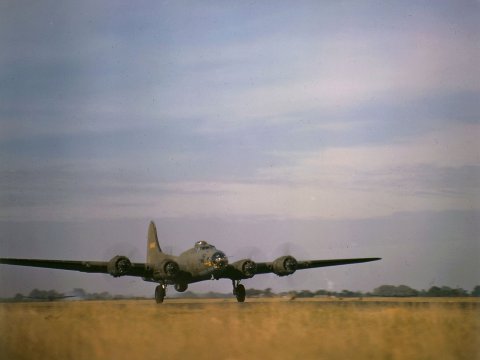 Within
weeks of the December 1941 attack on Pearl Harbor and America’s official
entry into the Second World War, Allied forces in Europe activated the
now-legendary VIII Bomber Command (often referred to as the Eighth Air
Force) to serve as the principal American force to attack Germany from
the air. Often in tandem with planes from the Royal Air Force, American
B-24s and B-17s — or Flying Fortresses — from the “The Mighty 8th” would
spend the next several years bombing strategic towns and cities in Nazi-held
Europe. Within
weeks of the December 1941 attack on Pearl Harbor and America’s official
entry into the Second World War, Allied forces in Europe activated the
now-legendary VIII Bomber Command (often referred to as the Eighth Air
Force) to serve as the principal American force to attack Germany from
the air. Often in tandem with planes from the Royal Air Force, American
B-24s and B-17s — or Flying Fortresses — from the “The Mighty 8th” would
spend the next several years bombing strategic towns and cities in Nazi-held
Europe.
As a jumping off point for countless bombing runs, including many in
broad daylight, the United States Army Air Forces (the predecessor of the
U.S. Air Force) set up bases in England during the war. In 1942, LIFE’s
Margaret Bourke-White spent time with the Bomber Command — an assignment
that LIFE shared with its readers in an October 1942 feature notable, although
hardly surprising, all these years later for its triumphant tone:
The most potent U.S.
force to hit the Nazis so far in this war is the Bomber Command, stationed
in England. Operating Flying Fortresses, it is making attacks on German-occupied
Europe as frequently as weather and operating conditions permit. To date,
all the raids have been tremendously successful. From 25,000 feet, it has
given a superb exhibition of precision bombing by hitting German factories,
airfields, ships and oil refineries on the nose. In two months of operations,
it has shot down more than 100 German fighters, lost less than six of its
own bombers.
[NOTE: As the war dragged on, the bombers and
their crews out of England would, inevitably, face steeper and more dramatic
losses. On October 14, 1943, for example — "Black Thursday" — nearly 600
crew members and 60 Flying Fortresses were lost in a single raid against
a ball-bearing factory in Schweinfurt, Germany.]
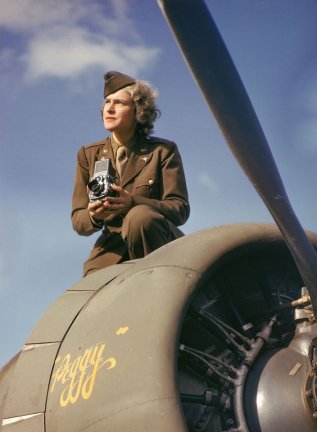 To photograph Bomber Command, LIFE sent photographer Margaret Bourke-White
to the headquarters of Brigadier general Ira. C. Eaker, commander in chief
of Bomber Command, and to one of the secret airfields from which the Flying
Fortresses operate…. Miss Bourke-White’s pictures arrived in the U.S. just
when the Bomber Command was making its biggest sorties. Flying Fortresses
roared out over the Channel and attacked German industries in the Lille
region. Another group of six Fortresses a few days before dropped 600-lb.
bombs directly on the German airfield at St. Omer, France. On the way home
they were attached by 35 crack Nazi pursuits. When the brief fight was
over, at least 13 Germans were plunging earthward and the six Fortresses
were sailing on. Another time a Fortress came back t England with one motor
shot away, one disabled, a third missing badly, and with 12 cannon holes
and 2,000 machine-gun holes in the fuselage. Still other squadrons of Fortresses
scored better than 70 percent hits in their first two weeks of bombing
operations over Europe. “Fantastic accuracy,” said the British.
To photograph Bomber Command, LIFE sent photographer Margaret Bourke-White
to the headquarters of Brigadier general Ira. C. Eaker, commander in chief
of Bomber Command, and to one of the secret airfields from which the Flying
Fortresses operate…. Miss Bourke-White’s pictures arrived in the U.S. just
when the Bomber Command was making its biggest sorties. Flying Fortresses
roared out over the Channel and attacked German industries in the Lille
region. Another group of six Fortresses a few days before dropped 600-lb.
bombs directly on the German airfield at St. Omer, France. On the way home
they were attached by 35 crack Nazi pursuits. When the brief fight was
over, at least 13 Germans were plunging earthward and the six Fortresses
were sailing on. Another time a Fortress came back t England with one motor
shot away, one disabled, a third missing badly, and with 12 cannon holes
and 2,000 machine-gun holes in the fuselage. Still other squadrons of Fortresses
scored better than 70 percent hits in their first two weeks of bombing
operations over Europe. “Fantastic accuracy,” said the British.
Bomber Command was ready. It
was confident that although still small, it would grow and grow, and as
it grew, the intensity and terribleness of the attack on Germany would
grow with it, until he skies of Europe would be blacked and its earth furrowed
with American bombs.
Bourke-White, one of LIFE magazine’s original four staff photographers,
was America’s first accredited woman photographer during WWII, and the
first authorized to fly on a combat mission. For decades she covered conflicts,
civil wars, humanitarian crises and natural disasters. She documented segregation
in the American South, was the last person to interview Gandhi before he
was assassinated, was one of the first photographers to document the liberation
of Nazi death camps and survived a torpedo attack while traveling by ship
to North Africa in 1943 and was briefly married to the American writer
Erskine Caldwell (God’s Little Acre, Tobacco Road). Widely recognized
as one of the greatest photojournalists of the 20th century, she died in
1971. She was 67 years old.
|
![]()
![]()
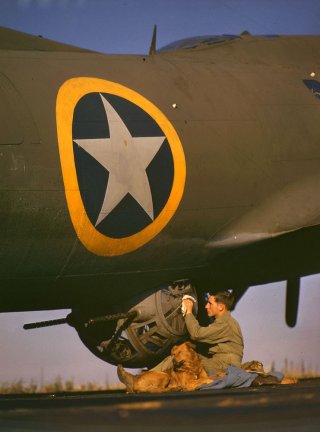
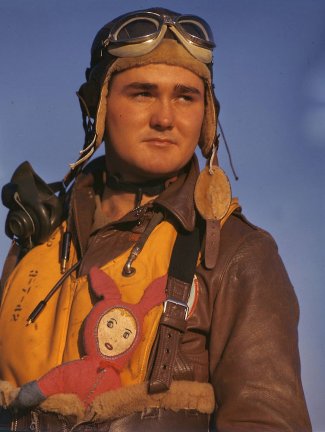
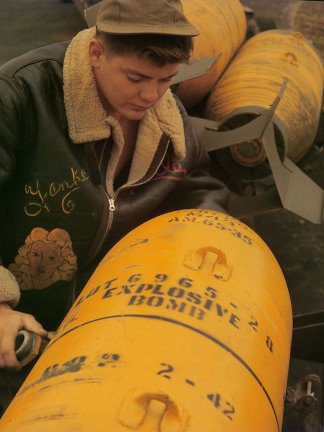
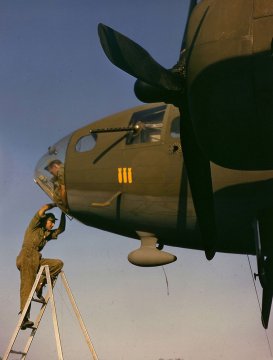
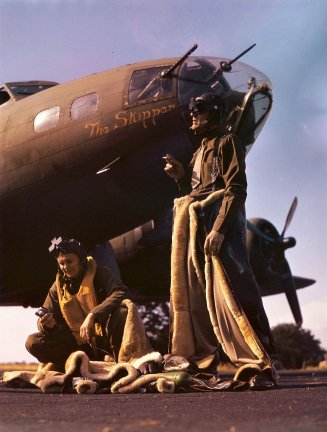
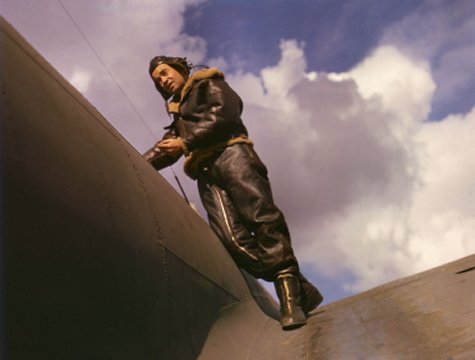
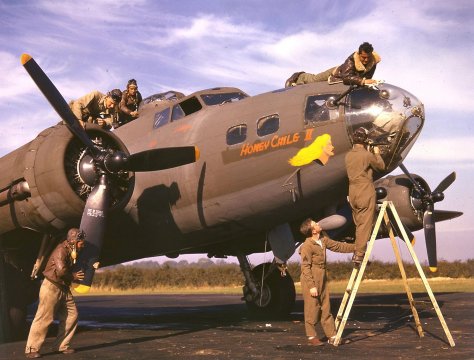
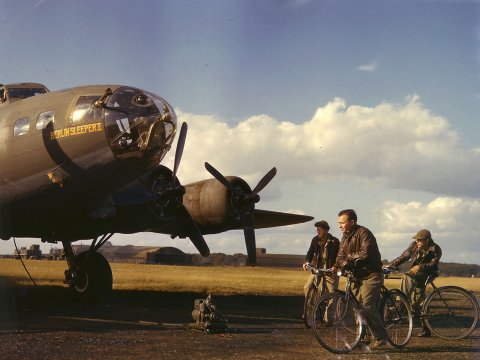
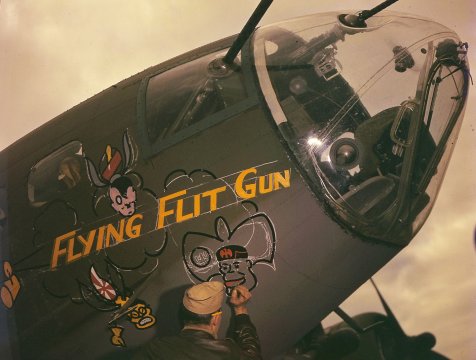
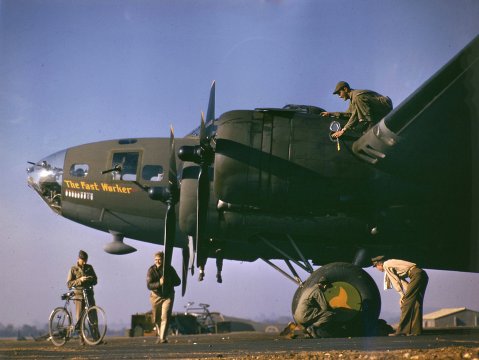
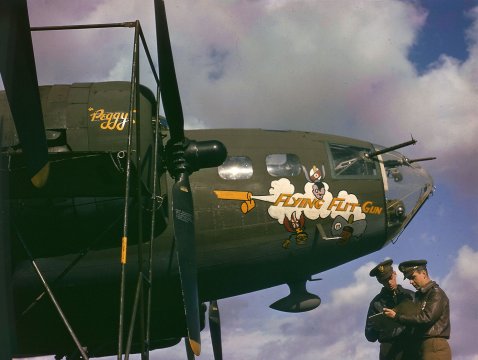
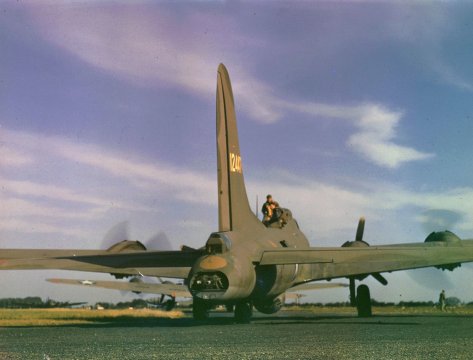
![]()
